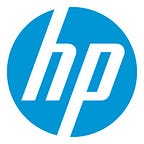Top industry and investment trends in device security
This article was contributed by Mitchell Weinstock, Partner at HP Tech Ventures.
As technology evolves, the need for robust device security continues to grow. HP has long led the industry with its comprehensive security strategy and solutions, and HP maintains a very intense interest in security at the edge. When customers use HP products, whether a printer, laptop, or USB dock, they use the most secure devices available, thanks to HP’s dedicated cybersecurity team.
To maintain this robust level of security, HP is constantly looking across the globe for startups that will help in this area and make devices more secure for users. Companies worldwide are exploring detailed and creative aspects of device security, like Tessian, whose product ensures users are sending emails to the correct recipients. Other examples include TypingDNA, which uses biometrics to verify identities based on typing style, and Area 1, which uses AI, machine learning, and computer vision to tackle phishing threats.
HP has also partnered with cybersecurity companies like Deep Instinct to bring innovative security technologies into HP products. Every year there’s a new way to attack devices and a new way to defend them, and HP is dedicated to working with both existing and up-and-coming companies to implement powerful security solutions.
With new trends like remote work and hybrid workspaces creating advanced cybersecurity risks, the device security industry has had to adapt, creating and responding to emerging trends.
Let’s dive into the current industry and investment trends in device security.
Industry trends
When COVID-19 forced office workers to work from their homes, it created an IT nightmare that will continue to evolve as hybrid and remote work styles become the norm. When working from an office, employees typically log into networks and devices that ensure they are protected by requiring different layers of secure logins before accessing a particular server. This process is called micro-segmentation. With employees now regularly working remotely, security professionals are working to bring that same level of protection into home offices and other remote locations. For many businesses, this means transitioning to a Secure Access Service Edge (SASE) approach. This cloud-based approach combines network and security technologies to safely connect remote users to company systems, replacing VPNs and becoming an essential piece of device security.
Another intriguing trend is cyber insurance, an area within the security industry that has seen increasing growth in recent years. With the alarming number of cybersecurity attacks in 2021 alone, it’s no surprise that businesses are looking for ways to protect themselves should they need to recover from an attack. While cyber insurance is not necessarily new, it’s clear that investors and companies are paying more attention to this area of security, with companies like Coalition landing impressive funding.
An exciting and relatively new trend is something called homomorphic encryption. Before this, all encrypted data needed to be de-encrypted before use. With homomorphic encryption, users can work on data while it’s encrypted, and it stays secure. This new encryption method could also resist decryption attempts via quantum computing, which could be essential as quantum grows. IBM offers homomorphic encryption services, and Intel is working on chips dedicated to the new encryption method. In the future, it could become an essential part of financial technology and personal security.
A less positive trend is the increasing cybersecurity risk attached to older medical devices. Because they often use extremely outdated operating systems, these older devices have little to no protection against cyberattacks, which puts valuable patient data at risk. While the FDA has offered guidelines on protecting older devices from hackers, manufacturers have little incentive to deal with the constant stream of threats, and hospitals are hesitant to replace expensive devices. The FDA is currently seeking more authority to enact requirements and protocols for updating security capabilities on at-risk devices to address this.
Investment trends
Due to the impact of COVID-19 and the influx of remote work needs, there has been a marked acceleration of digital transformation. While impressive and necessary, this digital transformation has put device security under stress as IT and cybersecurity professionals rush to keep up with the constant stream of new technologies and threats. To address rapidly evolving security concerns, companies are adopting zero-trust models and prioritizing endpoint protection.
This market shift was evident in Q1 2021, as noted in this report from Momentum Cyber. Both M&A and financing activities were at an all-time high, with $5.6B capital raised in Q1 2021, a 77% YoY deal volume increase, and an $18.9B transaction value across 50 M&A transactions.
The cybersecurity market has seen a record year so far, primarily due to the recent boom of ransomware attacks. In the first half of the year, cybersecurity stocks were up by 16.8%, and the market as a whole has grown by 592% in the last ten years, reaching a valuation of $425.8B.
As cybersecurity risks and threats continue to grow and evolve, the market will respond in kind, rising to meet continuously heightened demand. To stay ahead of risks, companies and investors will embrace and adopt emerging cybersecurity technologies. Based on this continuous growth, we can expect further innovations and creative responses to cybersecurity threats.
